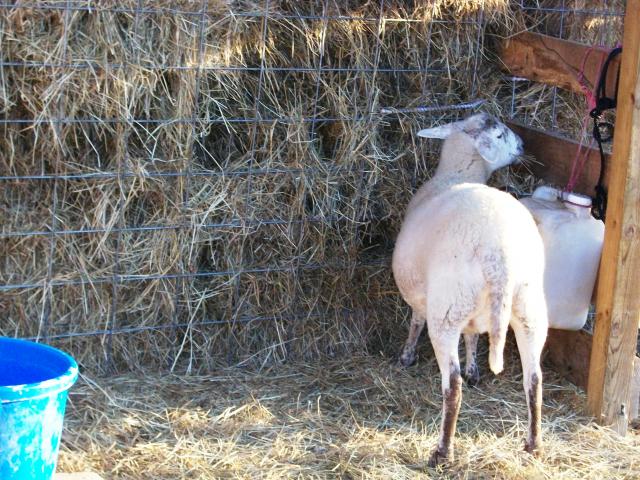Beekissed
Mountain Sage
Even for 1 cow that is overstocking if you want to feed no extra feed. Drought years can really show you how much your pasture is worth. I found out real quick with just 3-5 hair sheep on 1 acre of land...in a drought year, one acre will not sustain 3 sheep and 30 chickens without overusing the pasture during the hotter months...imagine a cow, sheep and chickens on 2.5 acres.
There is no way you are going to do that at all with milk cow and sheep on 2.5 acres, even without figuring in drought. I don't know that you have a concept of how much they actually consume, the seasonal grass growth and how much wear and tear on that pasture actually happens with free grazing and foot travel.
In the winter you will have to buy hay, as you don't have enough land to grow any and cure it on the stem for winter grazing, so buying feed for several ruminants on 5 acres of land is a foregone conclusion.
Designate paddocks and concentrate on building stationary paddocks first for sheep and chickens, in which you can rotate the pasture. If you think about fencing the whole 5 acres it will seem monumental, so first fence in one acre with good sheep fencing of woven wire topped with a hot wire. Put your chickens inside this paddock and only free range them within the confines of this one acre..until you get the next paddock built that adjoins that one. Then rotate sheep and chickens back and forth or even together between these two paddocks. Then just build onto the paddock idea until your whole acreage is fenced but also divided into paddocks....now you have a system in which you can rotate grazing, separate breeding animals, dedicate one plot to growing hay or crops only, etc.
In the winter you can still free range the chickens but you can confine the sheep to a sacrifice area near shelter and feed hay. They will conserve energy by not having to graze and search for graze, they won't overwork your pasture when it is at its weakest and lowest in nutrition, and they can store up manure for you in one spot to spread evenly on gardens or pasture later.
Here's a pic of sheep at a self feeding station in a winter sacrifice area...the hay was a bargain because it was last years second cutting, so I got it for $1 a bale. You can see the sheep are not suffering from nutrient loss from this last year's hay as they fattened up on fall fescue in the orchard before being penned for the winter:

There is no way you are going to do that at all with milk cow and sheep on 2.5 acres, even without figuring in drought. I don't know that you have a concept of how much they actually consume, the seasonal grass growth and how much wear and tear on that pasture actually happens with free grazing and foot travel.
In the winter you will have to buy hay, as you don't have enough land to grow any and cure it on the stem for winter grazing, so buying feed for several ruminants on 5 acres of land is a foregone conclusion.
Designate paddocks and concentrate on building stationary paddocks first for sheep and chickens, in which you can rotate the pasture. If you think about fencing the whole 5 acres it will seem monumental, so first fence in one acre with good sheep fencing of woven wire topped with a hot wire. Put your chickens inside this paddock and only free range them within the confines of this one acre..until you get the next paddock built that adjoins that one. Then rotate sheep and chickens back and forth or even together between these two paddocks. Then just build onto the paddock idea until your whole acreage is fenced but also divided into paddocks....now you have a system in which you can rotate grazing, separate breeding animals, dedicate one plot to growing hay or crops only, etc.
In the winter you can still free range the chickens but you can confine the sheep to a sacrifice area near shelter and feed hay. They will conserve energy by not having to graze and search for graze, they won't overwork your pasture when it is at its weakest and lowest in nutrition, and they can store up manure for you in one spot to spread evenly on gardens or pasture later.
Here's a pic of sheep at a self feeding station in a winter sacrifice area...the hay was a bargain because it was last years second cutting, so I got it for $1 a bale. You can see the sheep are not suffering from nutrient loss from this last year's hay as they fattened up on fall fescue in the orchard before being penned for the winter:




 When are ya'll moving?
When are ya'll moving?